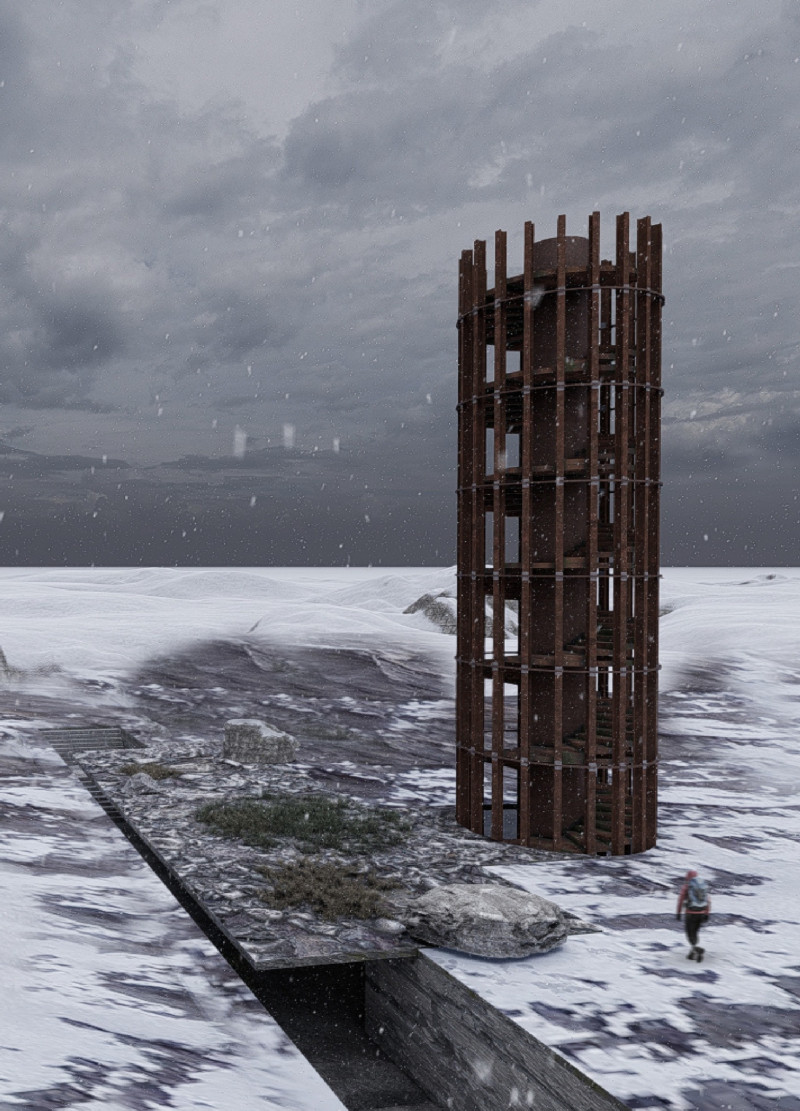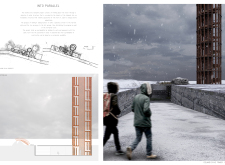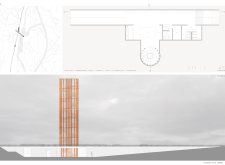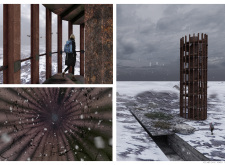5 key facts about this project
The Iceland Cave Tower project integrates closely with its natural surroundings in a rugged Icelandic landscape. Its design incorporates a skeletal metal structure that allows the building to interact with the local climate. The choice of materials is deliberate, with the aim of enabling corrosion over time, which contributes to a dynamic relationship between the tower and its environment.
Structural Approach
The architectural design features an incomplete skeletal structure that invites exploration. This design choice encourages visitors to engage with the space, as the open form allows for personal interpretation and interaction. The evolving character of the building is set against the backdrop of changing weather and landscapes, reinforcing its connection to the site.
Subterranean Elements
A notable aspect of the design is the underground component, which connects to the tectonic plate and provides access to nearby hot springs. This connection supports a well-organized layout, enhancing movement and exploration within the space. Strategic pathways guide visitors through the building, encouraging them to engage with the geothermal features that characterize the area.
Sustainability Considerations
Sustainability plays a key role in the project’s design. The walls and pavements are made from rock sourced during the excavation process, a choice that highlights a commitment to minimizing the carbon footprint. By using local materials, the project fosters a deeper connection to the geological features of the region and emphasizes an environmentally responsible approach to building.
The overall design culminates in an external façade that will naturally weather and adapt over time. This characteristic allows the tower to blend into the landscape, continuously reshaping its presence in the dynamic Icelandic environment.






















































